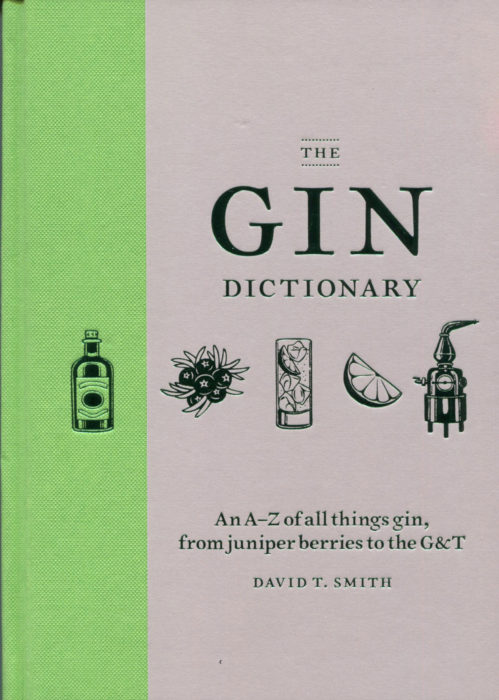
David T. Smith has a singular passion: gin. And it almost did not happen.
As he explains in the introduction to this clever volume, by the year 2000 gin was waning. Again. There had been that period of “bathtub” gin when the spirit has been discredited during Prohibition. By the early part of this century, gin was a backwater, dismissed by cocktails drinkers and overlooked by bartenders.
And then a funny thing happened. Lots of us simultaneously and independently rediscovered gin and a generation of gin makers sprouted like spring mushrooms. There is no single recipe for “gin.” And David believes he’s now tasted over 1500 gins from around the world. An army of folks — some trained chemists, some amateurs, some mixologists, some amateur cocktail fanatics — have created a new industry of gin making. In New York City, you can visit old warehouses on the East River that were abandoned but now house boutique gin distillers of distinction. The gin rebirth rivals the microbreweries that similarly dot our landscapes. Dedication, passion, and inspiration are common to both communities.
You can’t easily describe gin. Literally hundreds of different ingredients have been tried, and are being tried now, in different gins, both those historic British ones and that new kids on the block from just down your street. If you visit a liquor store and bring home, say, three or four bottles and sample, you’ll be most surprised. There is an incredible range of flavors and accents out there. So, what are all these ingredients, what are the prominent new gins out there and what the heck is Genever anyway?
To answer those questions and many more, David has written The Gin Dictionary: The A-Z of all things gin, from juniper berries to the G&T. Yes, there are drink recipes here, like that classic G&T with some history thrown in, history that will surprise you. If you think the G&T has been around forever and always adored, you are doubly wrong. Everybody seems to be drinking Hedricks — and I urge you to try it — but where did it come from? Is it old or new? What gives it a flavor that everyone seems to cherish?
David tells you all about as much of the gin world as can fit into 250 pages. For example, that Hedricks has been produced in Scotland only since 1999. And the flavor is “merely” a combination of rose, cucumber, juniper, coriander, angelica root, orris root, lemon peel, orange peel, chubeb berries, caraway seed, elderflower, chamomile and yarrow. No, all gins are not the same! Many of these ingredients get their due diligence and their own page in The Gin Dictionary. Angelica root is also known as wild celery and is the third most prolific botanical used in gins. It grows only in Nordic countries and Russia, so you probably won’t be seeing it on your weekend hike. But its use, its wide and popular use, tells you how deep the history of gin making is. People have been searching and researching for centuries, experimenting with surely out-of-the-way ingredients, and perfecting spirits that draw applause from around the planet. Secret recipes and secret ingredients abounds.
Surely, if Indiana Jones were going to go into the spirits business, it would be making gin. The wonder and complexity of it all is happily discussed here in 200 entries devoted to the spirit of gin. And that is a spirit you can enjoy in endless fashion.
The Gin Dictionary goes on sale on May 1. You can preorder now. And stock up on some different gins, too! There are culinary science experiments ahead of you.
